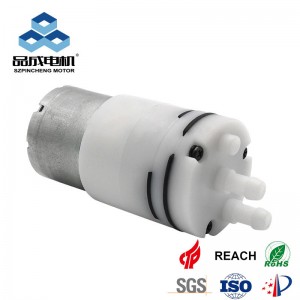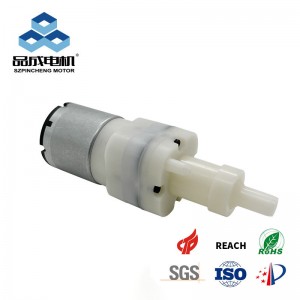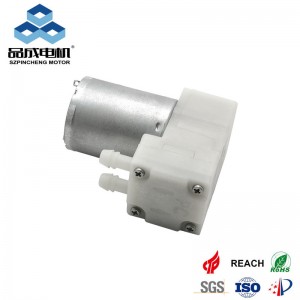1. Why Micro Foam Pumps Are Compatible with Disinfectant Fluids
The ability of Micro foam pumps to handle disinfectants lies in two critical engineering choices: chemical-resistant materials and a closed-loop design that protects both the pump and the disinfectant’s potency.
A. Corrosion-Resistant Materials for Harsh Formulations
Disinfectants attack common pump components (e.g., rubber seals, plastic housing) over time, leading to leaks, pump failure, or chemical leaching. Micro foam pumps use high-grade materials tailored to resist these threats:
-
Housing: Polypropylene (PP) or high-density polyethylene (HDPE)—materials that withstand swelling, cracking, or degradation when exposed to alcohol, bleach, or QACs. Unlike standard Foam Dispenser Pump models (which often use low-grade plastics that warp after 50+ uses with 75% alcohol), PP/HDPE housing in Micro foam pumps maintains integrity for 500+ dispense cycles.
-
Seals & Gaskets: Food-grade silicone or EPDM rubber—both FDA-compliant and impervious to corrosive disinfectants. Silicone seals, in particular, prevent alcohol from seeping into the pump’s internal mechanics, avoiding the “stiffening” issue common in Foam Dispenser Pump units with nitrile rubber seals (which break down in high-alcohol solutions).
-
Internal Components: 304 stainless steel springs or PP-coated valves—non-reactive to bleach and hydrogen peroxide. This eliminates rusting, a major flaw in cheap pumps with uncoated steel parts that corrode in bleach-based disinfectants.
B. Closed-Loop Design to Preserve Disinfectant Efficacy
Disinfectants lose their germ-killing power when exposed to air (oxidation) or contaminants— a problem plaguing spray pumps and open-system Foam Dispenser Pump units. Micro foam pumps solve this with a closed-loop system:
-
Minimal air intake: Each dispense draws only the exact volume of disinfectant needed, reducing air contact by 80% compared to spray pumps. For example, a 70% alcohol foam disinfectant in a Micro foam pump retains its alcohol concentration for 6+ months, while the same fluid in a spray pump may drop to 55% concentration in 3 months (rendering it ineffective against viruses like COVID-19).
-
Contamination resistance: The foam format acts as a barrier—unlike liquid disinfectants dispensed via lotion pumps (which pick up skin oils or dirt from users’ hands), Micro foam pumps dispense pre-foamed fluid that minimizes direct contact with the pump’s actuator. This lowers the risk of cross-contaminating the remaining disinfectant.
2. Key Advantages of Micro Foam Pumps for Disinfectant Use
Beyond compatibility, Micro foam pumps offer practical benefits that enhance disinfection performance—advantages over Foam Dispenser Pump and traditional pump types:
A. Uniform Foam Coverage for Better Germ Kill
Disinfectants require full surface contact to eliminate bacteria and viruses. Micro foam pumps produce ultra-fine bubbles (50–300 μm) that spread evenly across surfaces, adhering longer than coarse foam from Foam Dispenser Pump units or dripping liquid:
-
Medical settings: In hospitals, a Micro foam pump-dispensed disinfectant covers 95% of a countertop with one pass, compared to 70% coverage with a standard Foam Dispenser Pump (which leaves gaps due to large, uneven bubbles). This reduces healthcare-associated infections (HAIs).
-
Household use: For high-touch surfaces (e.g., doorknobs, phone screens), micro-foam clings to curved or textured areas—unlike spray disinfectants (which mist away) or liquid (which runs off). This extends contact time, critical for killing stubborn germs like norovirus.
B. Precise Dispensing to Reduce Waste & Safety Risks
Overusing disinfectants wastes money (for businesses) and irritates skin/lungs (for users). Micro foam pumps solve this with calibrated control:
-
Dispense volume: 0.3–1.0 mL of foam per stroke—ideal for small surfaces (e.g., a keychain needs 0.3 mL) or larger areas (e.g., a kitchen counter needs 1.0 mL). Generic Foam Dispenser Pump units often dispense 1.5–2.0 mL per stroke, wasting 50% of the product.
-
No aerosol risk: Unlike spray pumps (which release airborne droplets that pose inhalation hazards), Micro foam pumps dispense non-aerosol foam. This makes them safe for use in enclosed spaces (e.g., offices, classrooms) or around children/pets.
C. Compact Design for Portability & Space Efficiency
Many disinfection scenarios require portability (e.g., travel hand sanitizers) or space-saving solutions (e.g., bathroom counters). Micro foam pumps excel here as Compact Foam Pump variants:
-
Dimensions: 10–24 mm diameter, 20–45 mm height—fits in 15–100 mL containers. A travel-sized 30 mL disinfectant can use a 12 mm Micro foam pump, whereas a standard Foam Dispenser Pump (30+ mm diameter) is too bulky for a pocket-sized bottle.
-
Versatile mounting: Screw-on, press-fit, or snap-on designs adapt to plastic tubes (e.g., pocket hand sanitizers) or rigid bottles (e.g., kitchen disinfectants). This eliminates the need for brands to source multiple pump types for different products.
3. Micro Foam Pumps vs. Alternatives for Disinfectants
To highlight their superiority, compare Micro foam pumps to common dispensing systems for disinfectants:
|
Pump Type
|
Compatibility with Disinfectants
|
Germ-Kill Efficacy
|
User Safety
|
Portability (as Compact Foam Pump)
|
|
Micro foam pumps
|
Excellent (resists alcohol/QACs)
|
High (uniform coverage)
|
Very High (no aerosol)
|
Yes (10–24 mm diameter)
|
|
Foam Dispenser Pump
|
Poor (degrades in high alcohol)
|
Low (gaps in coverage)
|
Moderate (coarse foam)
|
No (bulky, 30+ mm diameter)
|
|
Spray Pump
|
Fair (corrodes seals over time)
|
Moderate (aerosol loss)
|
Low (inhalation risk)
|
Yes, but risky
|
|
Lotion Pump
|
Poor (contamination risk)
|
Low (drips off surfaces)
|
Moderate (skin contact)
|
Rare (bulky design)
|
For example, a hotel might use Compact Foam Pump-style Micro foam pumps in guest bathrooms—small enough to fit on sinks, safe for guests, and cost-effective due to minimal waste. A hospital would avoid Foam Dispenser Pump units for high-alcohol disinfectants, as they fail quickly and compromise infection control.
4. How to Choose the Right Micro Foam Pump for Disinfectants
To maximize performance, select a Micro foam pump tailored to your disinfectant type and use case:
-
Disinfectant Formulation:
-
Alcohol-based (60–95%): Choose silicone seals (resists alcohol swelling) and PP housing.
-
Bleach/peroxide-based: Opt for EPDM seals (resists oxidation) and HDPE housing.
-
Use Case:
-
Medical/industrial: Prioritize sterilized pumps (gamma-irradiated) with 0.5–1.0 mL dispense volumes.
-
Travel/portable: Select Compact Foam Pump variants (10–15 mm diameter) with 0.3–0.5 mL per stroke.
-
Regulatory Compliance: Ensure the pump meets FDA (21 CFR Part 177) and EU REACH standards—critical for global distribution.
you like also all
Read More News
Post time: Sep-27-2025




